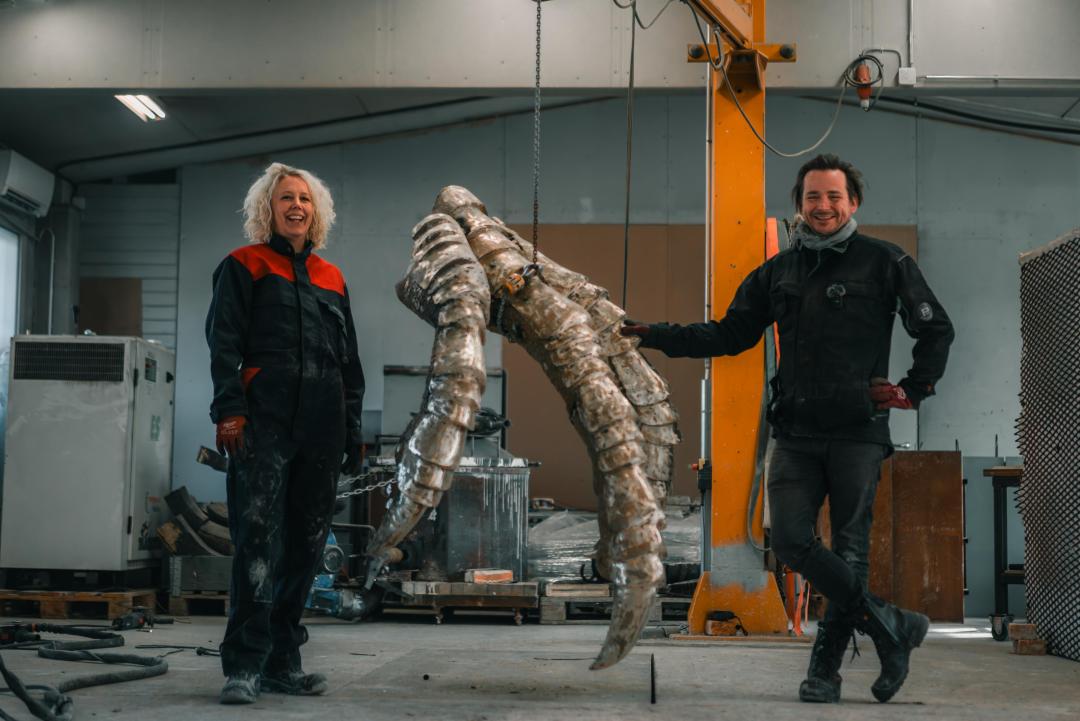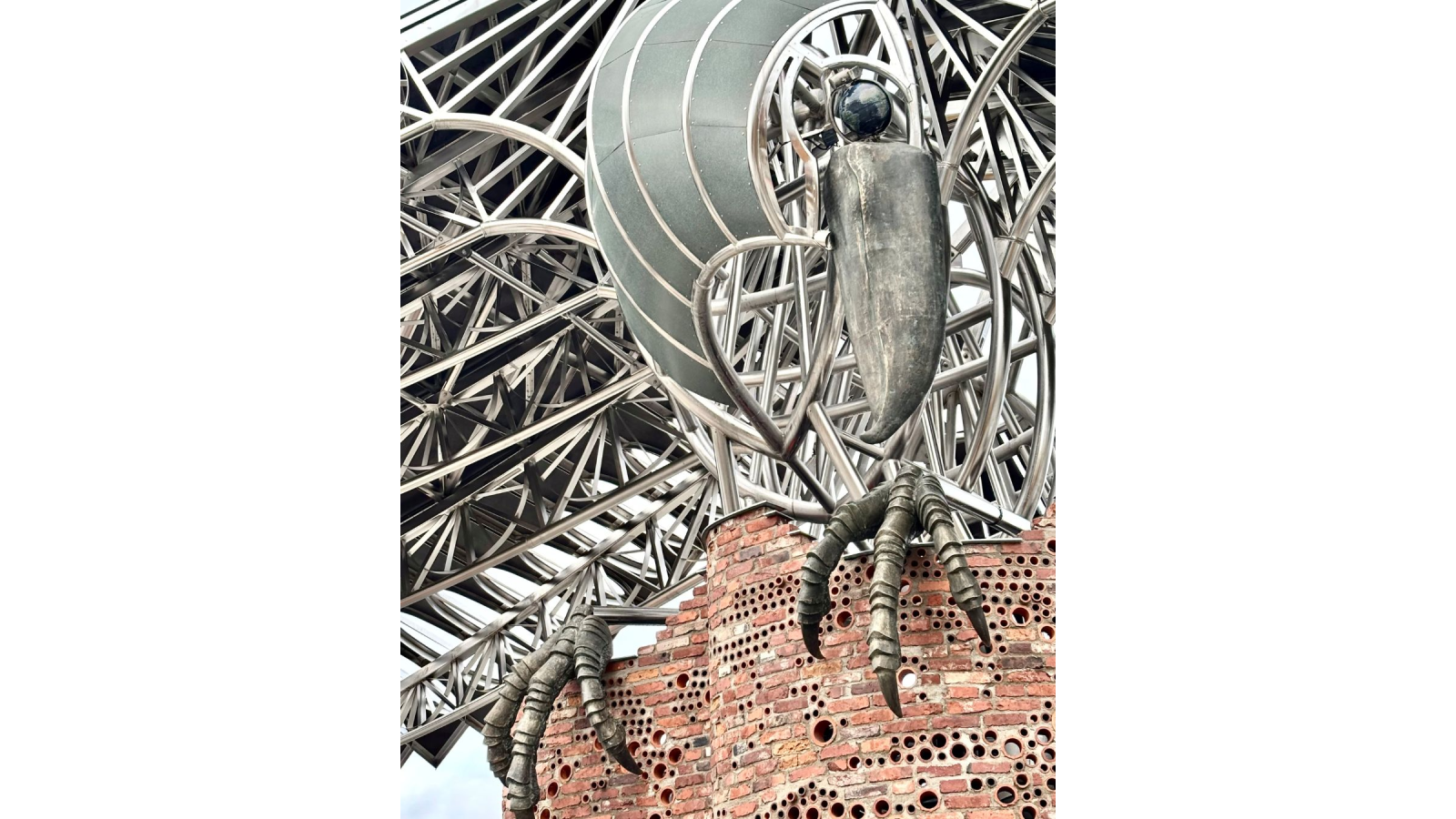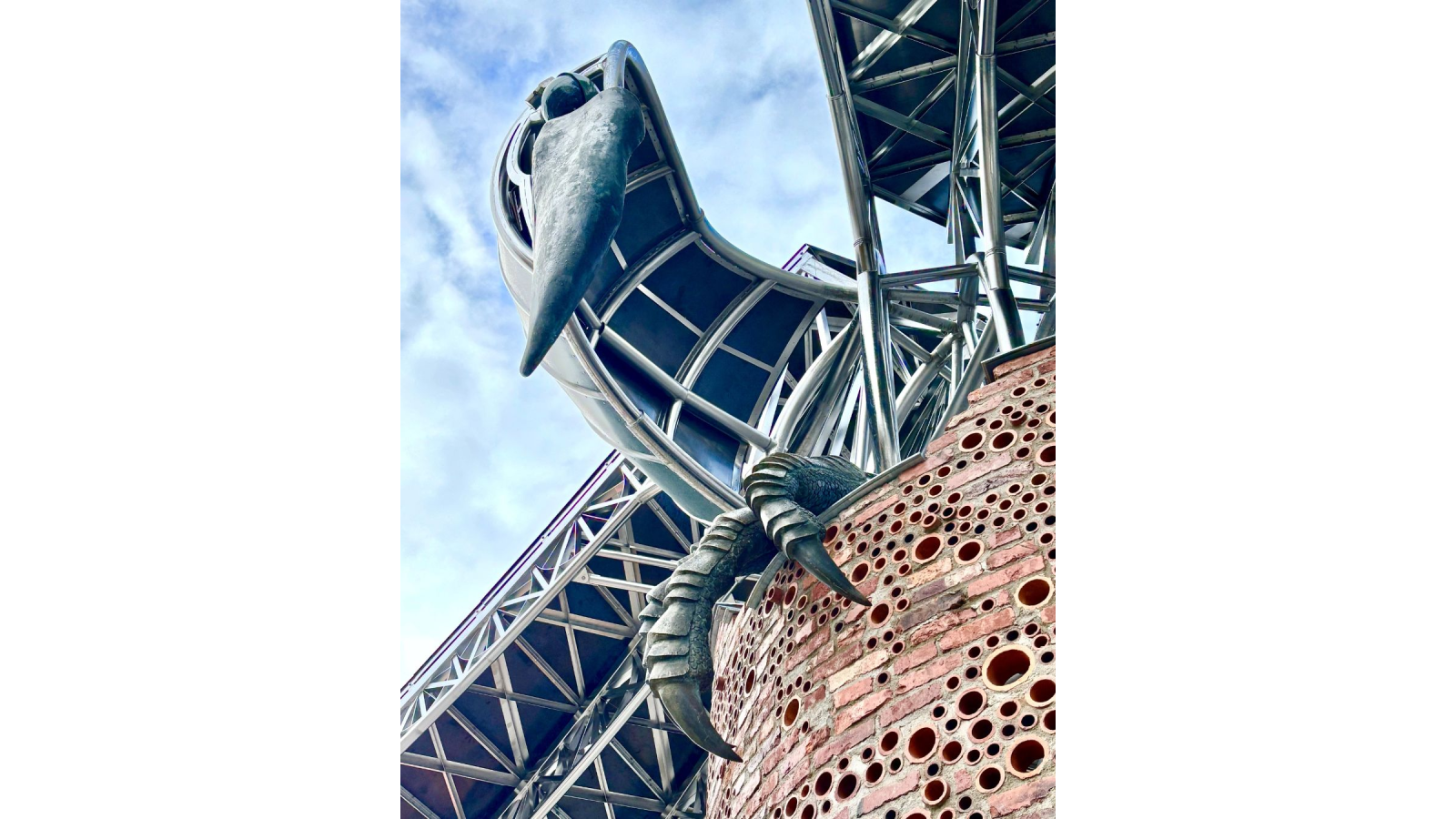Raven flies over Tikkurila – Vantaa’s brand-new public artwork is a massive, internationally significant sculpture
The most visible part of the transformation of Tikkurila’s old railway building's facade is the new Raven artwork. The sculpture is over ten meters high, and the Raven’s wings spread to a width of thirty meters.

Photo: Teija and Pekka Isorättyä
The Raven constitutes part of a more extensive set of artworks called Kohtalokas myöhästyminen (“Fatal delay), which is built around the themes of the station square; that is, time, waiting, and encounters.
The artwork is situated in downtown Tikkurila, in Carl Albert Edelfelt square. Vantaa City Museum, situated next to the railway station, is Finland’s first brick railway station. Visual artist Albert Edelfelt's father, Carl Albert Edelfelt designed it in 1862. The square was earlier home to a bus terminal and taxi station, but now space is opened to pedestrians and events.
Artists Teija and Pekka Isorättyä
The designers of Raven, artists Teija and Pekka Isorättyä, are well-known for their experimental and multisensory works of art. Typical of the artist couple's production is combining new technologies, the tradition of craftsmanship, and sculptural art. The Raven, too, was handmade out of stainless steel, copper, and bronze that will get a beautiful patina as years go by.
The materials of the sculpture refer to the history and railway environment of the surrounding area. In addition, the work utilizes robotics in the bird's mobile eye. As a large structure, the work also required solid engineering skills: The Raven is not merely a visual work of art; it is also a protective structure under which you can hide from rain or sunshine.
The Raven will be added to Vantaa Art Museum Artsi’s collection of public works of art
The Raven sculpture and other new works of art in the area will be added to Vantaa Art Museum Artsi's collection, which includes works from the 1960s to this day. Vantaa Art Museum Artsi’s public art collection is located all over Vantaa's streets, parks, and public buildings. The city's public art projects are conducted multiprofessionally, as part of more extensive urban planning.
“We started to plan the Raven many years ago, at the time when Artsi’s then public art curator Anne Kaarna-Suomi created the art concept for the area together with the Isorättyäs. The city's public art has during the past few years bolstered the role of the artist as part of regional overall planning. The Raven is the climax of this development work,” says Heli Lukkarinen, Vantaa’s public art curator.
The unveiling ceremony for the artwork Korppi - the Raven
The artwork will be celebrated on Tuesday, December 9, from 5:30 PM to 6:30 PM at Carl Albert Edelfelt Square in Tikkurila. The event will feature more details about the piece, live music, and spectacular performances. Welcome!
During the unveiling, the artwork’s lighting will be switched on, and the mechanism of the Raven’s robotic eye will be activated for one week. After that, the eye will be closed for the winter and will come back to life in the spring.
More information: Vantaa event calender
Three questions for Teija and Pekka Isorättyä
Teija and Pekka Isorättyä casting the Raven's talons at Taidevalimo Sinisalo. Photo: Rasmus Paavola, Vantaa Art Museum Artsi
1. What experiences have affected your artistic starting points and how are they seen in the art in the area?
Our creative process always takes place in dialog between two people: we are a tandem. We spent the first few years of our careers in Mexico City. In all its chaos, it has left an indelible mark on us. We originate from Tornio, and only the magical realism of Tornionjokilaakso is a stronger influence on our work than Mexico City.
The undertone of our artistic lifework always arises from big existential questions. For example, the spirit of Edelfelt square has temporal layers: Architecture of the 1800s, the era of reconstruction, but also the future. The Raven can also be seen as a reference to the end of an era. By the year 2025, artificial intelligence reads and writes the major part of the information we exchange. We wonder whether the history begun in 3200 BCE will ever come back? In Edgar Allan Poe’s poem, The Raven, the raven answers: Nevermore.
2. Why did you pick raven as the subject of your work?
The idea about the raven was born intuitively. Urban planning had decided to put a shelter in the place, and we were asked to provide integrating art for it. We turned the idea upside down: we decided to create a sculpture large enough to act as a shelter. When having a walk, we were thinking about what could be the form of the shelter, when all of a sudden, a raven flew over us. As a wise and mythical power animal—yet a somewhat dark figure—we found the raven as an inspiring subject. We believe that this square needs a strong, street credible protector that spreads out its wings to protect all visitors to the station.
3. You are familiar for combining robotics and the tradition of craftsmanship. Where does this come from?
Craftsmanship requires temporal dedication, which saves a piece of the working person into the object worked on. Meanwhile, as a side product of robotics, human touch and presence are removed from objects. We find this conflict between the past and the present fascinating. When we were young, we were strongly empathic toward weaknesses and errors. We may combine in our artwork objects that seem useless and robotics, so that we could mend and atone for the conflicts of different eras. On the other hand, the fun of being an artist lies in facing difficult technical challenges and learning something new when solving them.
Details about the Raven
The design and installation of the raven required a large multidisciplinary team. Installation work on the work began in the summer of 2025. Photos: Teija and Pekka Isorättyä
















